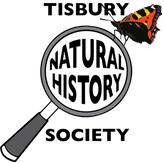|
On Thursday 15th September at the Victoria Hall in Tisbury High Street, starting at 19:30, we shall hear from Dr Ed Treasure of Wessex Archaeology who will talk to us on "Rewilding Archaeology".
A moment’s silence will be held at the start of the meeting as a mark of respect for the late Queen Elizabeth ll. If you haven't already signed up to the talk and want to come, please let us know via the Contact form. We can also send out Zoom links for those who prefer to stay at home. Guests are welcome for £2 per ticket. If you are interested to learn a practical skill and to help conserve the landscape around you, you may be interested to hear of courses in hedgelaying being offered at Church Farm in Semley over the next few months.
Day-long courses, aimed at beginners and free to participants, though limited to half a dozen people at a time, will be led by Anthony Brown, a man of considerable experience and skill, on five days between now and next February: Saturday 12th November, Friday 25th November, Saturday 10th December, Friday 20th January and Friday 3rd February. If you think you may be interested then please use our contact form and we will forward the email address to you. Late summer is the time to gather blackberries. In doing so, we do something humans have done for thousands of years; archaeologists have found their remains in the stomach of a neolithic man. Given the right conditions, bushes can fruit prolifically and as long as you can get close enough without getting caught in the thorns, it is possible to collect enough for immediate consumption as well as bottling or freezing for future use. Blackberries have numerous health benefits being high in fibre and full of vitamins like C and K as well as manganese and antioxidants. Vitamin K helps your blood to clot which is useful given the number of scratches you might suffer while picking them.
We generally use the term bramble to refer to a tangled, prickly shrub, usually the plant Rubus fruticosus. Brambles grow abundantly throughout the British Isles coping with almost any environment and are particularly hardy plants. Bushes have long, thorny, arching shoots which root easily, and this helps them to spread forming dense clumps in neglected areas. In this respect they can be an important pioneer species. Dense clumps can supply shelter for young trees, allowing them to establish free from browsing by animals. Eventually, as shade from the tree’s spreading canopy increases, the bramble will die back as it cannot flourish in deep shade. The young foliage is eaten by deer and there is concern that increased deer numbers are reducing the amount of bramble in some woodlands to the detriment of those species of birds that rely on such understorey scrub for nesting. In mid-summer the bushes are clothed in abundant pink or white flowers, and these are particularly attractive to butterflies, bees and hoverflies. As well as humans, wildlife enjoys the berries including foxes, badgers and small birds all of which will distribute the seeds in their droppings. In late summer one can often see Red Admiral butterflies feeding on the sugars of overripe berries on a sunlit bush. All in all, although it can be a pest if it gets into our gardens, the lowly bramble is a very important for conservation and wildlife. Enjoy the fruits while you can; after Old Michaelmas Day – 29 September – the devil is reputed to have spat on blackberries so should be avoided. You have been warned… by Andrew Graham |
Photo: Avocets (Izzy Fry)
The headers display photos taken by our members. Do get in touch via the Contact Form if you'd like to submit a photo for selection.
Archives
May 2024
Categories
All
|

 RSS Feed
RSS Feed